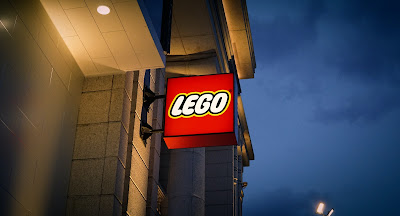The Lego brick has been around for a while. In 1949, the first plastic block was molded. New and distinctive Lego pieces have been created since 1949. A Lego brick pulled from a box today will fit with any brick produced decades ago. This is the outcome of more than 50 years of dedication and careful planning.
Worldwide, the Lego Group operates factories. But how do you manufacture countless varieties of bricks with such accuracy and a rainbow of colors throughout the day?
How do the bricks locate the proper boxes?
This is the tale of how tiny granules of plastic are made into imaginative playsets. At the factory, a truck carrying raw materials pulls up. This type of vehicle can carry up to 28 tonnes of plastic granules.
From the truck, the granulate is shot into tall silos where it is kept. Depending on how each Lego piece is supposed to work, various sorts of plastic granules are employed. The granules are fed into the facility through a maze of lengthy pipelines. The Lego factory's heart is reached through the pipes.
Molting Zone
The granulate is quickly heated to a temperature between 230 and 310 degrees Celsius. Modern injection molding equipment creates Lego pieces around-the-clock, every day of the week. The color is first combined with the uncooked grains. Over 50 distinct colors are being used in the production of bricks. After that, the colored granulate is led into the molding device.
With enormous power, the plastic melts into a consistency resembling toothpaste. The mold is subsequently filled with the paste. It requires the control of powerful forces. The maximum pressure is 29,000 PSI. The tire pressure on a car, by contrast, ranges from 29 to 43 PSI. A brand-new Lego brick as we know it emerges from the mold when the material is quickly cooled.
The plastic scrap left behind from the molding machines is immediately crushed and recycled
One shape of the Lego component can be created at a time using each mold. Thus, the mold needs to be changed to produce an element in a new shape.
One of the secrets to the Lego company's success is the distinctive molds. Every plant has a section devoted to routinely cleaning and maintaining the molds. The precise construction of the molds guarantees that every Lego block will always fit together seamlessly. Therefore, the molds are handled with the utmost care.
Each mold comes with a unique set of instructions that address pressure, time, and temperature, among other things. At each time the molds are replaced, temperature testing and molding tests are conducted to make sure the machine is perfectly configured. Samples are delivered to the quality division, which assesses the element's precision and durability. It is made sure that every Lego component is flawless.
AGV (Automatic Guided Vehicle)
These kinds of robots first entered mass production in 1987. When the box next to the molding machine is filled, these clever assistants swap it out for an additional empty box.
The full boxes are subsequently transported to the conveyor system by the AGV. Each box's contents are identified by a distinct barcode. To ensure that the contents fit into the smallest amount of space, the box is shaken to balance out the contents. The lids can now be shut. The boxes' trip stops here for the time being.
The boxes are available for pickup in high bay warehouses that can reach heights of 37 meters. The box is gathered when a specific Lego piece is needed. The entire registration and localization process is automatic. After this, the boxes are moved on to another location. These small guys are not sent directly to the packaging lines, unlike many other aspects. First, the Minifigures need to develop their own distinctive expressions.
More than 7000 torsos can be produced using a machine each hour. Minifigure production exceeds 500 million annually, making them one of the most prevalent species on earth.
Counting machines make ensuring that components are placed in compact production boxes during the initial stage of packing. To ensure that each box contains the correct numbers, they are weighed and measured one at a time. In a line of counting, machines are the bricks that will be in one bag in a whole Lego kit.
Each production box's contents are then automatically placed in a plastic bag. Along with the enormous unique elements and building instructions, the bags are placed inside open Lego boxes. Every 24 hours, the most effective packaging lines pack around 50,000 cartons. The boxes have now been shut and sealed. Here are the last Lego boxes in their current form.
The shipping packaging for the Lego boxes includes stacking them on pallets. They are now equipped for protracted travel. One of the big distribution centers is where the journey starts. They are transported from here to shops all around the globe.
Now it's up to kids and adults to discover the exciting and imaginative creative possibilities of the Lego set.





_11zon.png)

No comments:
Post a Comment